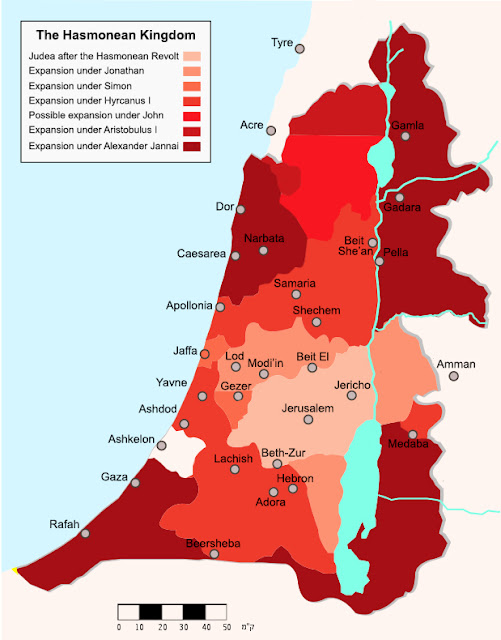Sadducees and Pharisees
After four and a half centuries under Babylon, Persia, and then Greece, the Jews were free again. However, they were now clearly divided, under the domination of two major parties. On the one side were the pro-political priests and leaders (the later Sadducees) who were wealthy, powerful and favoured by the Hasmonean rulers. On the other side were the anti-political traditionalists (the later Pharisees), who were poor, powerless and favoured by the common people. The differences between the two parties increased as each developed its own beliefs and practices.
The Pharisees’ chief aim was to keep the law in all its details; not so much the law of Moses as the countless laws developed and taught by the teachers of the law, the scribes. They were particularly strict in keeping rules relating to religious observances such as fasting (Luke 18:11-12), tithing (Matthew 23:23), Sabbath-keeping (Matthew 12:1-2), the taking of oaths (Matthew 23:16-22) and ritual cleanliness (Mark 7:1-9). The name ‘Pharisees’ meant ‘the separated ones’, and many were so convinced they were God’s only true people that they kept themselves apart from others (Acts 26:5; Galatians 2:12).
If the Pharisees were the party of the scribes, the Sadducees were the party of the priests (Acts 5:17). (Their name possibly comes from Zadok, a priest of Solomon’s time whose descendants were regarded as the only legitimate priests; 1 Kings 1:38-39; Ezekiel 44:15-16). The Sadducees’ strategy was to use the religious and political structures of Jewish society to gain power for themselves. Since they controlled the priesthood, one of the main channels of power, it suited them to emphasize the temple rituals. However, they had little interest in the traditions of the scribes. The only Jewish law they acknowledged was the written law of Moses (Luke 20:27-28).
Sadducees and Pharisees had several other well known differences, chiefly in matters of their beliefs. The Sadducees did not believe in the continued existence of the soul after death, the resurrection of the body, the directing will of God in life’s events, or the existence of angelic beings, all of which were important beliefs to the Pharisees (Matthew 22:23; Acts 4:1-2; 23:7-8).
End of Jewish independence
The Hasmoneans ruled for almost one hundred years. Under them political, religious and military power joined together, so that the Hasmonean ruler was at the same time governor, high priest and commander-in-chief of the army.
 |
| Hasmonean_kingdom - Source: Wikimedia.org |
During the period of Hasmonean rule the Pharisees were often the ones who suffered. They welcomed the chance to reverse the situation when a later queen showed herself favourable to them. But when she died, fighting broke out between her two sons, one of whom favoured the Pharisees, the other the Sadducees. At that time Rome’s power was spreading towards Palestine, and as General Pompey had his army nearby in Syria, both sides asked for his help. Pompey settled the dispute by leading his army into Jerusalem and taking control himself. Thus, in 63 BC, Jewish independence came to an end.
Source: Bridgeway Bible Commentary (Don Fleming)


No comments:
Post a Comment